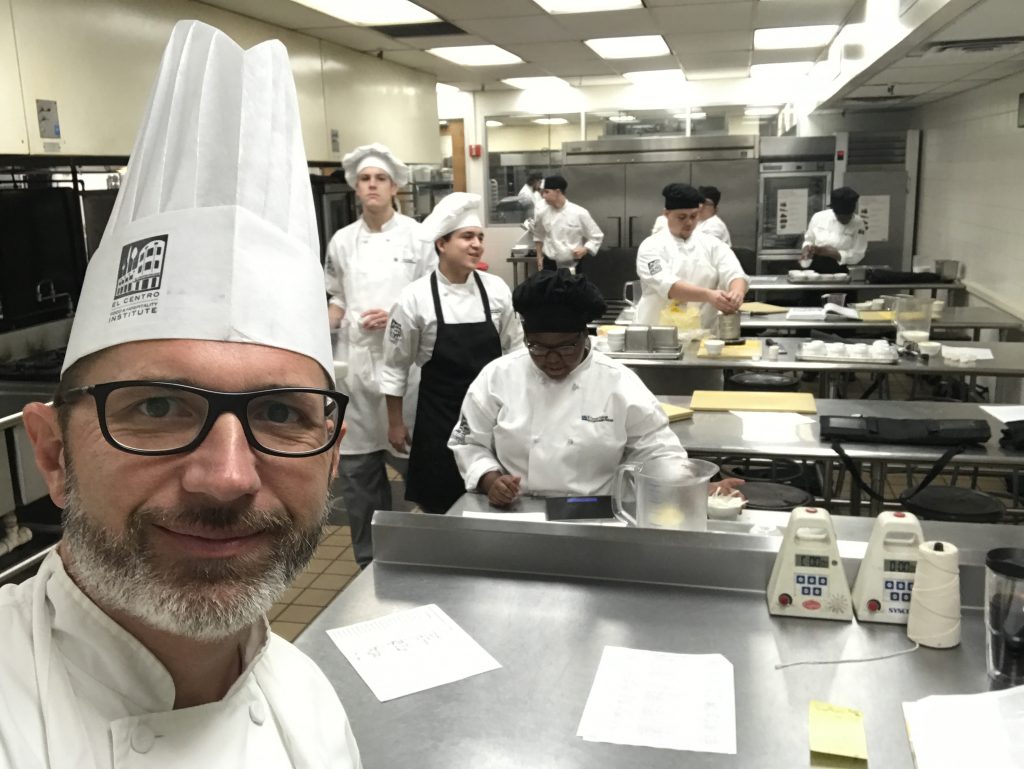
2020 was promising to be the year of new beginnings for El Centro College’s recently rebranded Culinary, Pastry, and Hospitality (CPH) program. There was the new name, the new 50,000 square foot facility, even a star-studded celebrity chef kickoff series — all part of a reignited push to train the world’s next batch of cuisine aficionados.
Then came the unforeseen: a global pandemic that brought the world to a standstill and subsequently forced CPH to temporarily pause operations.
“We had been working extremely hard building this team, we had hit the enrollment deadline and then, bam! All of a sudden, around March 12, everybody realized that wow, we may not come back from spring break,” said Steve DeShazo, CPH’s senior director.
In the blink of an eye, a program lauded for its ability to offer hands-on instruction was forced to rethink the way it offered classes to students. The task: providing the same level of top-notch instruction synonymous with the program’s reputation while also ensuring the health and safety of its students and staff — a tremendous undertaking for all involved, including CPH’s new instructional dean, Brian Hay. His first day on the job was March 23, the same day El Centro began an extended spring break due to the coronavirus pandemic.
“It’s been an experience. If you told me six months ago that we would have to switch to online in a week, I would have said that it can’t be done,” Hay said. “But that’s something amazing about our program. We’ve all decided that we’re here for our students.”
Hay, who says he’s met about half of his new colleagues via video conference, has the main responsibility of supporting instructors’ needs while also ensuring compliance with the program’s accrediting agency, American Culinary Federation.
In this new, perhaps unorthodox way of culinary instruction, students are evaluated not solely on their cooking skills, but more so on their ability to analyze, problem-solve, research and communicate, all in virtual reality. With no instructor at the front of the room to guide, students are forced to take control of and accountability for their learning.
“Everyone thinks it’s hands-on, and part of it is. But I like to say, ‘I’m not here to teach you how to cook; I’m here to tweak you,’” Hay said.
DeShazo added, “It’s not like the Food Network, where instructors are cooking on camera and students are at home trying to keep up. That’s not the way it works.”
Using the Blackboard program to facilitate online learning, the emphasis is placed on teaching repetition and consistency. From kitchen and food prep management to recipe conversion and cost, the program is working to train the “whole chef” for a career in the culinary industry.
Take preparing risotto, for example. Traditionally, students would show up to class and follow along with the instructor, the “see and repeat method” as DeShazo calls it. In this virtual reality, students prepare their own workstations at home — cleaning, cutting and measuring included — and upload pictures or videos for evaluation. An assignment may call for students to search online and find varying videos of risotto being prepared and compare them with the classic recipe in their textbook.
And the focus is on more than just the classroom. CPH instructors are considering the impact the pandemic is having on their students. They’re encouraged to be flexible with recipes and ingredients, understanding that students may not have certain items in their own kitchens or the money to purchase them.
While it’s a call to serve that all involved have honorably answered, both DeShazo and Hay agree that the students have been the true stars throughout this transition.
“Culinary students are visual learners. If you show them things, they get it. So [with the transition to online instruction], I expected the learning curve would be greater for students, and it’s not,” Hay said. “They have adapted tremendously. They’re used to three, four, five hours in a classroom. They’ve had to learn new technology, stay accountable, all while dealing with whatever is happening in their own lives. It’s amazing.”
The two insist the program is proving that this pandemic will not spell the end of Dallas’ restaurant scene. A rebirth, perhaps, but certainly not the end.
“A workforce program should mirror the industry it serves,” DeShazo said. “The experience we’re going through to pivot our program from in-person to online absolutely mirrors the innovation every food service operation is experiencing. This industry is resilient, and we will come back.”









[…] First appeared on North Dallas Gazette […]